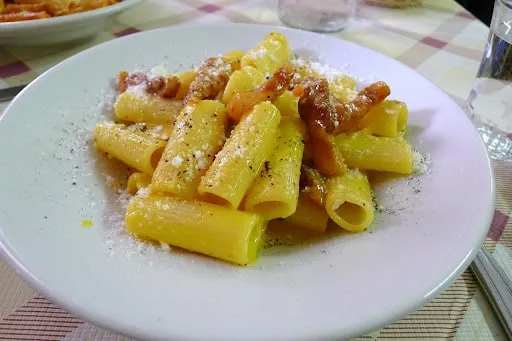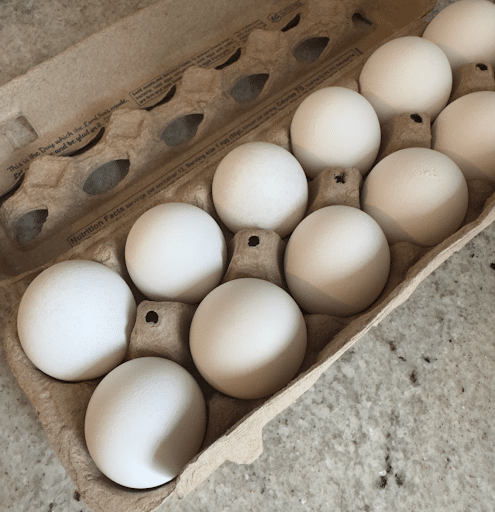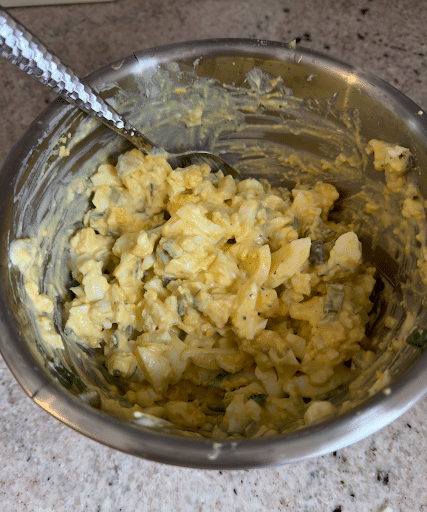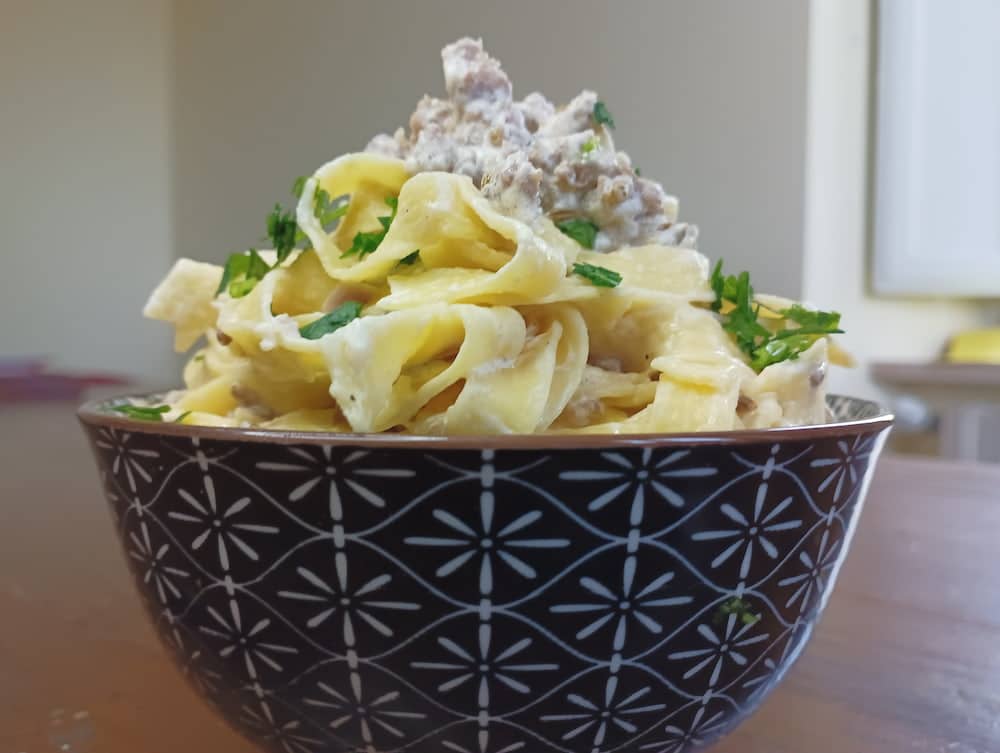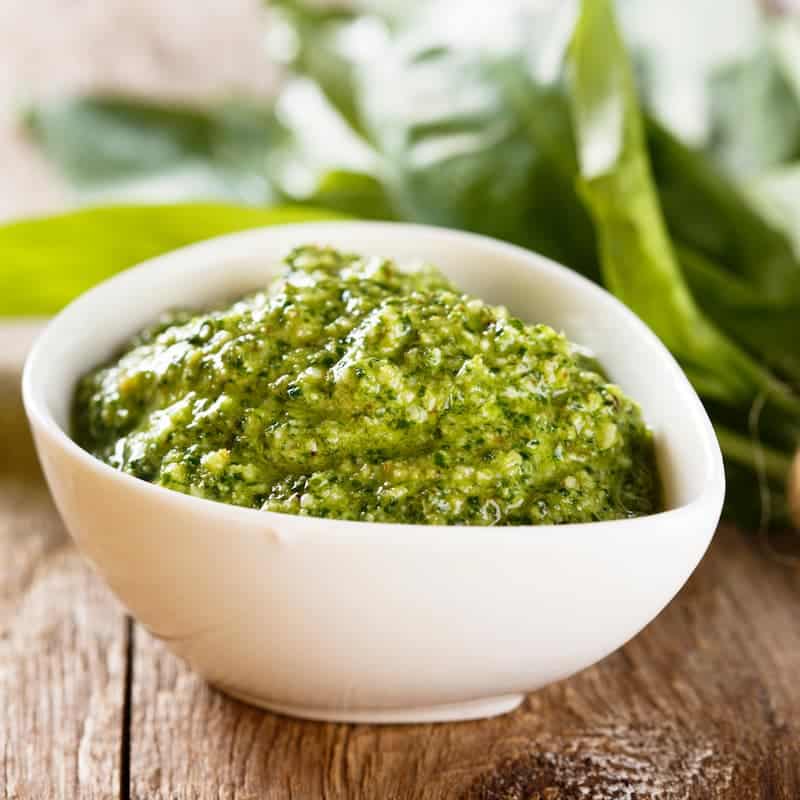Explore the delectable world of Roman pasta dishes with our in-depth comparison of pasta alla gricia vs. carbonara. Uncover the origins, ingredients, and preparation methods behind these classic Roman recipes.
When it comes to Italian cuisine, few dishes have captured the world’s imagination like Roman pasta. I’m talking about the supreme quartet: cacio e pepe, amatriciana, pasta alla gricia, and, obviously, carbonara.
Forget about risotto alla milanese or spaghetti bolognese. With their rustic elegance and mouth-watering flavors, these classic pasta dishes embody the true spirit of Roman cuisine. And despite their supposed simplicity, they outshine many of the more complex dishes.
But here’s a fascinating twist – did you know that some of the most iconic Roman pasta recipes were not actually born in Rome? Yes, it’s true!
I actually tell that story a lot in my posts. Three of these dishes were brought to Rome by shepherds from the province of Rieti in Abruzzo less than three centuries ago. However, today they have become integral parts of Roman culture and gastronomy.
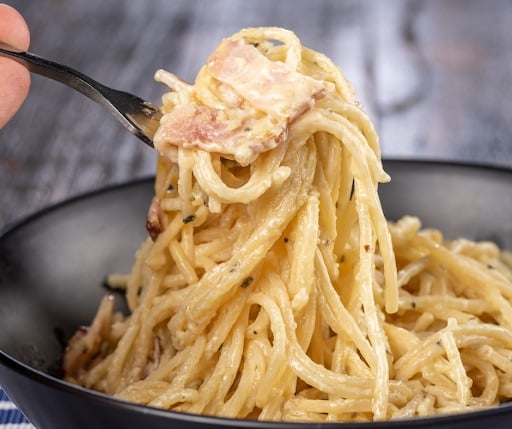
There’s A LOT to say about these dishes. Despite being made with simple ingredients, they have a rich history and actually require a lot of care to be done perfectly.
So, in this comprehensive blog post, we’ll delve into the captivating history of Roman pasta dishes, with a focus on two legendary contenders: Pasta alla Gricia vs. Carbonara. The reason is that, despite being very similar, these two dishes are kinda like the opposites of a spectrum. A spectrum that goes from an ancient recipe that was invented centuries ago, to post-WWII Rome and a chef who had to feed a lot of soldiers.
As we explore their origins, ingredients, preparation methods, and cultural significance, you’ll soon become an expert on Roman main courses. So, let’s embark on this savory journey and discover the flavors that have won the hearts of Romans and food enthusiasts worldwide.
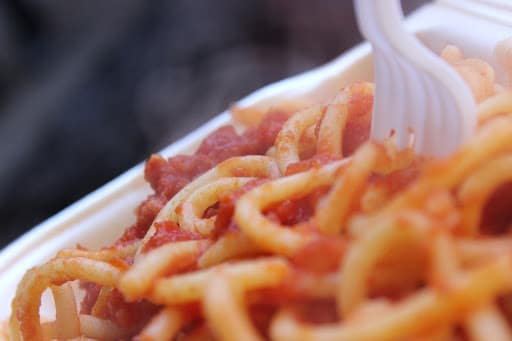
Pasta Alla Gricia vs. Carbonara: Origins Compared
So, as I was saying, with the exception of carbonara, the most classic Roman pastas are not of Roman origin. It’s a fact that will never cease to amaze me, and if you’ve read my other posts about these dishes, you’re probably very familiar with it.
These dishes were actually imported less than three centuries ago by shepherds from the province of Rieti, which was in Abruzzo at the time. These shepherds would travel as far as Rome during the transhumance season, and they brought with them only a handful of long-life foods that were easy to store, such as pecorino cheese, flour, black pepper, and guanciale – a local meat cut made from pork jowl.
Which, coincidentally, are the main ingredients of all the most famous Roman pasta dishes 😉
Cacio e pepe? From the shepherds of Rieti. Amatriciana? It gets its name from Amatrice, province of Rieti. Pasta alla gricia? It is actually the “progenitor” of Amatriciana. You get the idea.
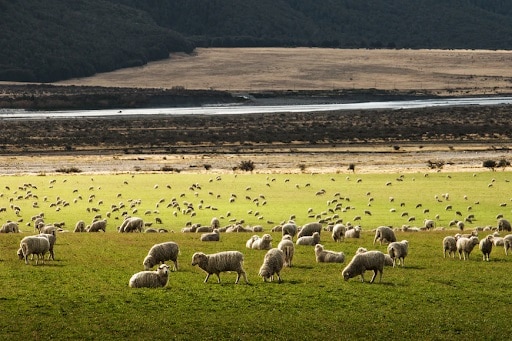
Carbonara is the only exception, as it was probably invented in Rome during the 1940s. Its invention didn’t have any link (that I know of) with the other aforementioned recipes. In fact, it was likely influenced by the habit of the Allied forces in Rome to eat eggs and bacon.
However, a quick look at its ingredients is enough to see that when it started to spread, the Romans transformed it based on what they were already familiar with.
Regardless of their origins, these dishes quickly made their way into the hearts of Roman people, who incorporated them into their culture. And nowadays, no one can talk about Roman cuisine without mentioning them.
This shift is also evidenced by the fact that although the original recipes were made with pecorino di Amatrice, they are now made primarily with pecorino romano cheese. These two cheeses are very similar to each other, but they have different PDOs and come from geographical areas with very distinct histories and cultures.
I know, it may not sound like much, but this is a country where, if you move 15 miles, the dialect changes and the local products are different, so bear with me 😀
Now, let’s see in detail what these classic Roman pasta dishes are all about. By the end of this post, you will be familiar with each of the recipes I have mentioned so far and be able to call yourself an expert on Roman main courses.
The 4 Main Roman Pastas
Let’s start our journey in the world of Roman pasta. We’ll go first with cacio e pepe. I will refer to it a lot in the next sections, so it’s better to know it before we delve into the other dishes. Then, I will talk about pasta alla gricia and how it evolved into pasta all’amatriciana. And finally, we’ll conclude with the most recent recipe: pasta alla carbonara. Let’s go!
Cacio e Pepe
Translated as “cheese and pepper”, this dish is made by mixing pecorino with black pepper and adding pasta cooking water to create a cream that will be used to dress spaghetti, tonnarelli, and other pasta shapes.
This was probably the first recipe invented by the shepherds of Rieti, as it uses fewer ingredients and has a more straightforward method than the other recipes listed below. The shepherds needed a dish that was easy to make, highly nutritious, and tasty. And let me tell you, they really got it right!
The cheese melds into a velvety coating that clings to each strand of pasta, creating a rich and comforting experience. It’s like a warm, comforting hug of flavor with a little kick from the pepper, making every bite delightful.
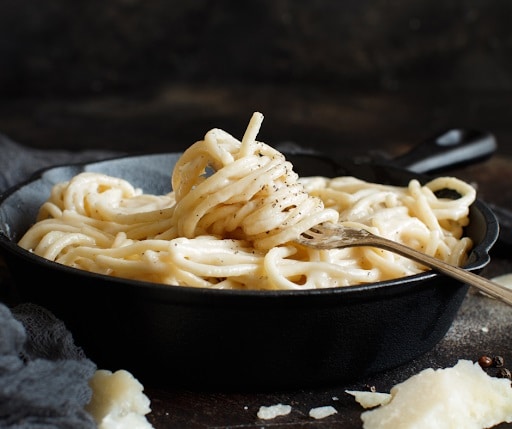
Cacio e pepe was probably first made with dry pasta, which gives it a distinct chewiness. However, nowadays it’s also made with egg pasta shapes, and I think they’re worth trying. Fresh, stuffed types of pasta like tortellini or agnolotti, although not really traditional, can give a very interesting twist to the recipe.
If you want to make this dish at home, Chuck has written a handy cacio e pepe recipe that you can use as a starting point. However, be advised: its seemingly humble ingredients demand precision and finesse.
Despite being such a simple recipe, it’s very easy to mess it up. You need to use the right amount of water and let it cool down to less than 140° F before adding it to the pecorino and pepper. Otherwise, your cream will be too liquid and won’t bond with the pasta.
It takes a lot of trial and error to find the right ratio. But if you perseverate, you’ll be highly rewarded by this dish’s inimitable taste.
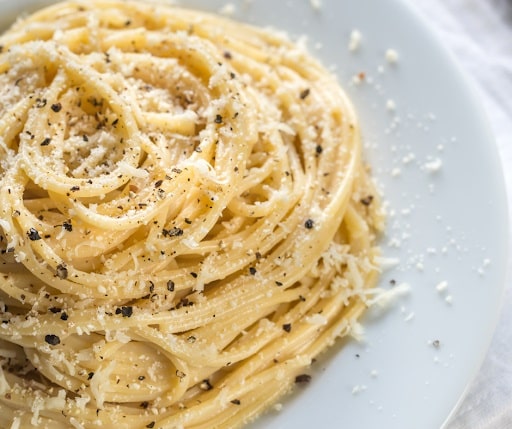
Pasta Alla Gricia
From a culinary perspective, pasta alla gricia might look very similar to carbonara.
After all, they’re all made with guanciale, black pepper, and a creamy sauce, using mostly long pasta shapes like bucatini or spaghetti. The only difference is that carbonara has egg yolks, while pasta alla gricia uses a dressing made from pecorino cheese, much like the one used for cacio e pepe.
And yet, these two dishes are very different in flavor and have very distinct identities.
As I already said, the origins of pasta alla gricia date back to the 16th century in the province of Rieti. More precisely, in the small town of Amatrice. It probably originated along with cacio e pepe and is considered the progenitor of the modern amatriciana sauce. For this reason, it is also known as white amatriciana.
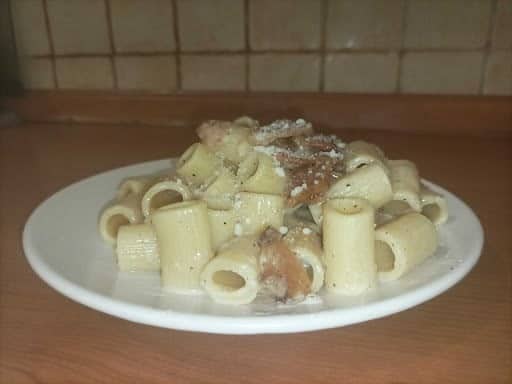
The Origins of Pasta Alla Gricia
According to the data published by the Comune di Amatrice, the original recipe probably had only dry pasta, guanciale, olive oil, white wine, black pepper, and no pecorino. Then, in the late 18th century, the use of tomato sauce started spreading in Southern Italy, and the shepherds or Rieti integrated it into their dishes, giving birth to the modern amatriciana sauce.
White amatriciana, on the other hand, evolved into the modern gricia, losing olive oil, but incorporating pecorino cheese. My guess is that this addition was made taking inspiration from an early version of cacio e pepe, since the typical gricia dressing is obtained by melting pecorino cheese over the cooking pasta, but without making an emulsion with cooking water like in modern C&P.
In the 19th century, the recipe arrived in Rome. There, the dish was first adopted by the so-called Grici, a group of Swiss merchants who sold bread and general foods. That’s where the name gricia comes from: it means “Grici style”.
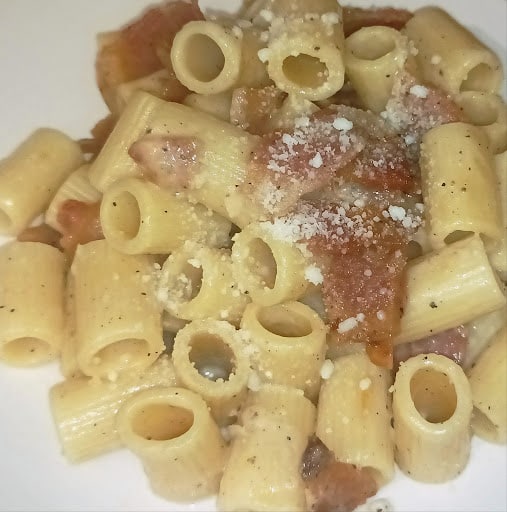
How it is Today
Nowadays, while sharing some similarities with both amatriciana and cacio e pepe, Pasta alla Gricia has carved its own unique identity. In fact, I think it takes the best of both worlds: the creaminess of the pecorino sauce and the juicy guanciale used in amatriciana.
If you want to learn more about it, I have written a pasta alla gricia recipe that I am very proud of, in which I explain every trick to make it perfect. As I was saying, the most common pasta shapes used are bucatini and spaghetti, but many people also like to use mezze maniche, tonnarelli, rigatoni, or even paccheri.
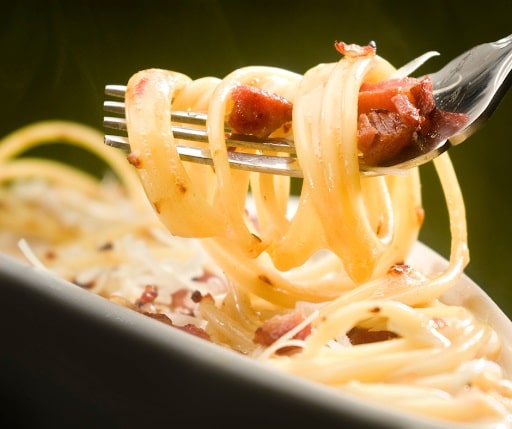
Amatriciana
I’ve already written a lot about pasta all’amatriciana in a dedicated post, when I translated the original recipe as published by the Comune di Amatrice.
By now, you already know enough to guess how it’s made. It has the same ingredients as pasta alla gricia, with the addition of San Marzano tomatoes and a single chili pepper.
The method is also similar to pasta alla gricia. The main difference is that you have to saute the chili pepper along with the guanciale and simmer the tomato sauce for a few minutes in the same pan after you’ve removed the meat.
Pasta all’amatriciana delivers a bold and robust taste with straightforward charm. The sauce strikes a harmonious balance between the tanginess of tomatoes and the saltiness of the pork, creating a satisfying contrast. It’s a rustic, soul-warming dish that’s both familiar and distinct, offering a hearty medley of textures and tastes.
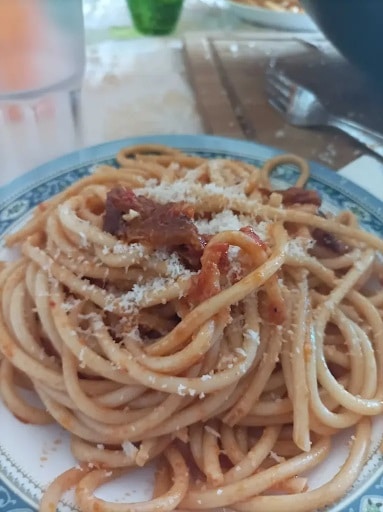
Pasta Carbonara
It’s been a long run, but we’ve finally got there.
I don’t think you need me to describe pasta alla carbonara to you. But just in case you’ve been living on the moon for all this time, I’ll do it anyway.
Pasta alla carbonara is a masterpiece of indulgence. Imagine strands of spaghetti cradling a luscious sauce that’s a velvety blend of creamy egg yolk, salty pecorino cheese, and the irresistible richness of guanciale. The heat from the pasta gently makes the egg mixture coagulate, creating a luxurious coating that clings to every twist of spaghetti. Each mouthful is a harmony of silky smoothness, the savory bite of guanciale, and the comforting, unadorned goodness of a classic Italian dish.
Among the dishes you have read about so far, carbonara stands out as the exception.
Invented in Rome during the 1940s, its history is a bit more mysterious. It’s believed that a chef catering to US soldiers in the city created it, drawing inspiration from their habit of having eggs and bacon for breakfast.
Some say that carbonara might also derive from a Neapolitan tradition of cooking pasta with eggs. However, the process is very different, so I don’t think it has much to do with this dish.
Also, there is no written trace of carbonara in cookbooks before 1947, so the US Army story makes more sense.
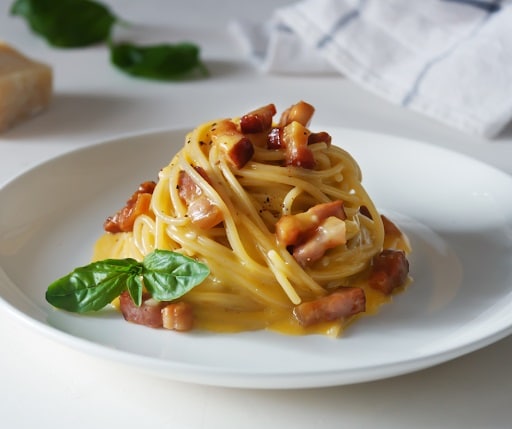
How carbonara is made
Carbonara lovers have pretty strong opinions on how this dish should be done. I, too, make it using only dry pasta, pecorino romano, guanciale, black pepper, egg yolks, no garlic, and no heavy cream.
However, purists might be in for a bad surprise, since most of the rules that we take for granted were not fixed when carbonara started spreading.
At first, it was very common to make it with whole eggs and bacon. And guess what, even heavy cream was not considered such a taboo as it is today.
Later on, as carbonara became more important in Roman cuisine, I guess that people customized it with the methods they were already familiar with. So, bacon was switched with guanciale, heavy cream and garlic were removed, pecorino romano was added to the equation, and finally the whole eggs were replaced with just egg yolks, as they made for a thicker sauce.
Despite its recent origins, Carbonara has firmly established itself as a beloved classic.
I’ve spent years learning how to make it perfectly, and recently I’ve posted a comprehensive penne carbonara recipe with all the tips and tricks that I’ve learned so far. If you want to start making it at home, go check it out!
So, What’s the Main Difference Between Pasta Alla Gricia and Carbonara?
Now you are definitely an expert about Roman pastas!
To sum up our pasta alla gricia vs carbonara comparison, here are the main things that you need to remember:
- these two dishes have very different origins, but in a way, they are both influenced by cacio e pepe and amatriciana, two dishes brought to Rome by shepherds around the late 18th century.
- Pasta alla gricia is made with dry pasta, pecorino cheese, black pepper, and guanciale. Carbonara, on the other hand, is made with the addition of an egg and cheese mixture that creates a thick sauce.
As per cacio e pepe and amatriciana sauce, now you know everything you need to start appreciating and making them at home. In fact, we have a recipe for each of the dishes we’ve discussed so far!
These classic Roman pasta dishes, rooted in history and culture, transcend geographical boundaries to captivate palates worldwide. Whether you’re drawn to the comforting richness of Carbonara or the understated elegance of Pasta alla Gricia, your exploration of Roman cuisine has just begun. Delight in each bite, savor the flavors, and let these dishes transport you to the charming streets of Rome. Buon viaggio gastronomico!

